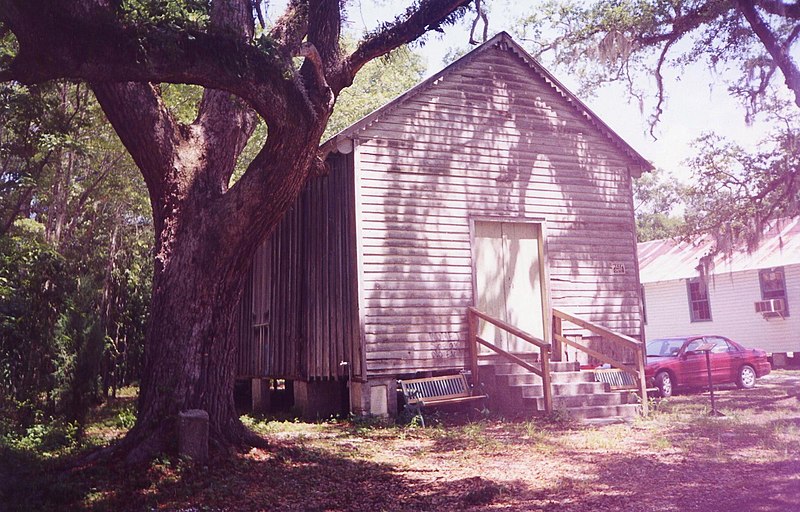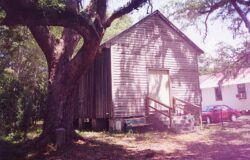Mandeville
Mandeville was founded in 1834, occupying part of what was formerly the sugar plantation of Bernard de Marigny de Mandeville in Louisiana.

Photo by Infrogmation.
Dew Drop Social and Benevolent Hall in 2001.
The town of Mandeville was founded in 1834, occupying part of what was formerly the sugar plantation of Bernard de Marigny de Mandeville. By 1806 Marigny had subdivided his plantation and successfully sold lots to buyers in New Orleans. Mandeville, on Lake Pontchartrain’s north shore, soon became a favorite resort for New Orleanians, who would cross the lake by ferry. Some built summer homes with broad galleries from which they could catch the lake breezes. Many of these early houses survive along Lakeshore Drive. The Greek Revival raised wooden house with a central hall at number 1717 was built circa 1840. At number 1721 is a stucco-covered house of brick-between-posts construction, built circa1835 , with a Creole plan, including a front gallery and a rear loggia, under a doublepitched roof. Later in the century, the side galleries and their pitched roofs were added to create this picturesque dwelling. At number 2407 is a raised and galleried wooden house (ca. 1885) with a steeply pitched gabled dormer and spindlework decoration. A pretty Eastlake gallery ornaments the raised wooden house (ca. 1885) at number 2423 , which has a central-hall plan.
Other buildings reflecting Mandeville’s early history can be seen on streets perpendicular to the lake. The Dew Drop Social and Benevolent Hall (432 Lamarque Street), a small, gablefronted frame structure, was built in 1895 by an African American benevolent society and was a popular jazz venue in the early twentieth century. The Holy Family Hall (395 Lafitte Street) of Our Lady of the Lake Catholic Church formerly housed a Catholic school for African Americans. The two-story wooden building is surrounded by galleries and has ogee-arched windows on the second floor.
Mandeville had declined as a resort by the 1940s, when the automobile could take New Orleanians farther afield. But as the northern terminus of the Causeway across Lake Pontchartrain, which opened in 1956, Mandeville and the unincorporated area surrounding it became the epicenter of western St. Tammany Parish’s explosive suburban growth from the 1990s.
Adapted from Karen Kingsley’s Buildings of Louisiana, part of the Buildings of the United States series commissioned by the Society of Architectural Historians (www.sah.org) and published by Oxford University Press.
